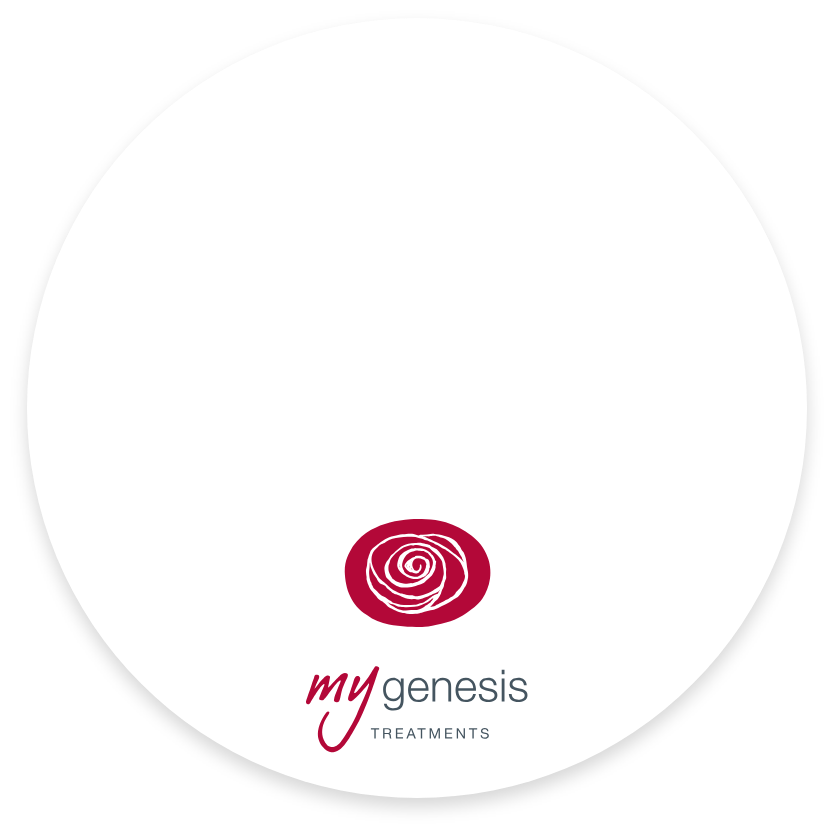
Today most people have scars, whether c-section, chicken pox or trauma induced. Scars are made up of a type of collagen called collagen type III. As clinicians, when we are trying to work on a scar, we look at different aliments that are presenting in the scar itself to determine the type of treatment that is required.
Topical applications such as silicone dressing, scar massage and compression is discussed in research as well as the use of laser treatment and skin treatments such as skin needling are well documented. As a dermal clinician I find a combined approach is the best way to treat a scar to ensure the best outcome for patients.
When looking at a scar we look at colour, height, indentation, texture, and size to determine the best treatment program for a scar. A lot of the time we use multiple treatment modalities.
Post surgery at the CAPS clinic our patients use micropore tape on areas to add compression to scars and once healed after 6 weeks the application of silicone wound gel such as strataderm is applied and recommended for up to 6 months. Silicone gels act like tape adding compression helping to decrease height of scars and reduce inflammation lightening a scar in appearance. Scar massage helps with the fibrotic scar tissue that can form after a procedure and this helps to break down and soften this tissue. Sometimes scars need further assistance, and this is where non-invasive skin treatments come into play.
Types of scars:
Normotrophic scars:
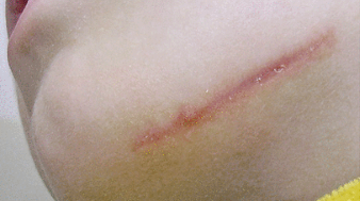
These are flat or slightly raised, red when immature and white when mature. These scars have a higher collagen type 1 make up than other scars due to the collagen bundles being slightly thinner to normal skin, making these scars a more favorable outcome.
Atrophic Scars
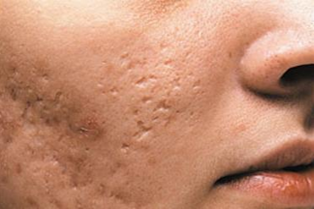
Atrophic scars present as depressed scars below skin level. This result is due to not enough skin tissue being laid down prior to healing. These scars can be seen in wounds that have prolonged wound healing such as skin conditions like cystic acne or chicken pox. Patients with underlying health concerns, low protein diets and those that are taking medications all can suffer from poor wound healing.
Hypertrophic scars:
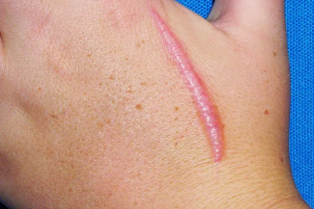
Hypertrophic scars are scars that are raised with excess type III collagen deposition. This scar remains within the margins of the injury of the scar itself. They present red, inflamed, hard, tender, or painful and can be itchy which is reported to be mast cell related. The main risk factors of developing these scars are in areas of increased tension & friction and a prolonged inflammatory stage in the wound healing process.
Widespread Scars:
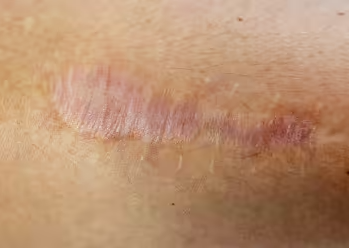
Widespread scars result from excess tension causing a scar to widen. These scars appear soft, pale, flat and can be wrinkled due to tearing of tissue fibers. Mature widespread scars contain no nodules or thickening of collagen fibers and are flat to the surrounding skin.
Contracted Scars:
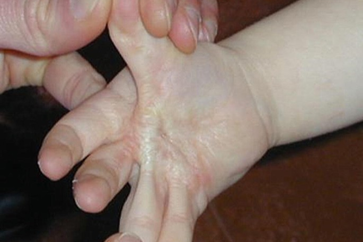
These types of scars typically come from burn wounds. The depth of the wound and the site of the body such as planes of movement and over joints are at more risk of these scars. Due to the pain associated with burns, limitation of movement of the area affected is common but the lack of movement can cause a scar to form like this.
Keloid Scars:
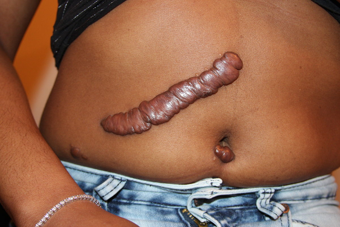
Keloid scars are raised scars which extend beyond the border of the original wound. Their appearance can be site specific, for example ears being large lobules and butterfly shapes on the sternum. When these scars grow, they can be itchy, painful and feel hot. Collagen type I & III present in this scar. It is believed that these scars are due to an upregulation of immune response, with reported causes seen to be tied to genetics and darker skin types are at a higher risk.
Treatment options:
At the MyGenesis clinic in the CAPS clinic we offer a range of treatments for several types of scars. As clinicians, we assess the scar itself during an in-person consultation and then we will choose the appropriate devices required to get the best outcome for our patients. The treatments we use can range from a selection of lasers that treat redness and remodel collagen to gain a more aesthetically pleasing scar by flattening or blending indentations. Skin needling is a popular treatment when it comes to scars especially acne scarring due to it not only remodelling collagen and elastin fibres but also stimulating growth factors. Other options for scars such as keloid scarring is cortisone injections and scar revision, and this can be done by Dr Alastair Taylor (plastic surgeon). Alternatively, selected dermatologists can perform subcision which involves releasing the scar tissue fibres underneath the skin for atrophic scars seen in acne scarring.
If you have a scar that you dislike and would like to know what treatment options are available, contact us on 6282 1155 to organise your free consultation with one of our dermal team.
Brooke Worthy
Dermal Clinician
BHSc (Dermal Sciences)
Our qualified team provide a comprehensive range of treatments for complete skin rejuvenation, cosmetic injectables, laser hair removal and non-surgical body sculpting.